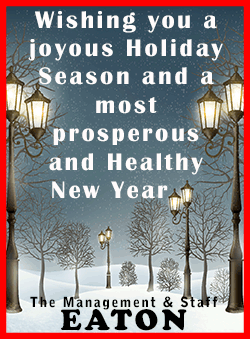|
 Feeding America, the nation’s largest, domestic
hunger-relief organization, reports that they are distributing 50%
more food donations than last year. Many people are getting help for
the first time due to financial hardships created by the pandemic. Feeding America, the nation’s largest, domestic
hunger-relief organization, reports that they are distributing 50%
more food donations than last year. Many people are getting help for
the first time due to financial hardships created by the pandemic.
In Illinois, about 1.3 million people did not know where their next
meal would come from, even before COVID-19 struck. As a result of
job losses and other factors, this number has grown.
COVID restrictions have changed some of the rules and processes for
donating food this year. University of Illinois Extension educators
Tayler Wheatley and Veronica Skaradzinski have some helpful tips and
resources to guide you through the challenges so your gifts have the
greatest impact.

How can Illinois residents find local pantries to take their
donations?
Start by visiting the Find Food Illinois Community Resource Map for
a list and contact information of local food pantries. “Be sure to
call ahead before donating to confirm location-specific hours and
protocols,” Skaradzinski says.
Find Food Illinois is also a great resource if you or someone you
know is struggling with food insecurity any time of the year. The
comprehensive food map combines all resources in one geolocation
mapping tool, eliminating the need to check multiple websites and
making it particularly convenient for those with limited access to
transportation.
What items can you donate?
“Before donating, consider what you would serve to your own family
and include that in your donations,” says Wheatley. Be sure to avoid
donating food items that are past the use or sell-by date. Also,
avoid donating perishable items, such as refrigerated items, baked
goods, or leftovers, since most food banks have limited storage for
perishable food.
While non-perishable shelf-safe food items are preferred,
Skaradzinski adds a note of caution. “Non-perishables can be more
processed and less healthy,” she says. “Look for shelf-stable items
that are lower in sodium, saturated fat, and added sugars in order
to provide healthier options.”
What items are most helpful?
“For helpful holiday donations,” says Wheatley, “you should consider
cranberry sauces, canned pumpkin; stuffing; dry macaroni;
low-sodium, canned veggies, such as corn, potatoes, green beans, and
carrots; boxed potatoes; low-sodium broths; gravy mix; and dried
herbs and spices.” [to top of second
column] |

There are also staple items that food pantries always need, such
as oatmeal, cooking oil, canned nuts, granola bars, peanut butter, low-sugar
breakfast cereal, lower sodium canned meats (chicken, tuna and pork), sugar-free
canned fruit or fruit cups, and no sugar added applesauce.
Should you run a food drive this year?
If your group or organization has typically held a holiday food drive, you might
be looking for safer alternatives in light of the current COVID-19 restrictions.
“In place of a food drive, consider hosting a ‘fund-drive’ to raise money for
local food pantries or food banks,” suggests Skaradzinski.
There are numerous benefits to making this switch. For one, it allows for
healthier choices. “Food pantries and food banks are able to use monetary
donations to purchase nutritious foods based on local needs,” explains Wheatley.
“It’s also convenient and safe. People can donate online, anywhere, at any
time.”
“A fund drive is also far-reaching and makes better use of resources,” says
Skaradzinski. “Pantries and food banks purchase foods at a reduced rate, which
makes monetary donations stretch further. They also support local farmers and
retailers by purchasing directly, which boosts the local economy and reduces
food waste.”
If you’re looking for an easy way to contribute to an existing food drive
effort, Skaradzinski and Wheatley point to Feeding America’s virtual fundraiser
tool, which allows individuals or groups to raise funds in support of their
ongoing efforts to provide meals for millions of families struggling with
hunger.

For more information about Extension’s local food distribution services, find
your county’s Extension office.
[SOURCES: Veronica Skaradzinski,
SNAP-Ed Educator, Illinois Extension
Tayler Wheatley, SNAP-Ed Educator, Illinois Extension
WRITER: Nicole Stewart, Communications, Illinois Extension]
REFERENCES:
https://www.feedingamerica.org/hunger-blog/food-bank-response-covid-numbers
https://www.feedingamerica.org/hunger-blog/donating-food-food-bank-consider-cash-instead-canned-goods
|